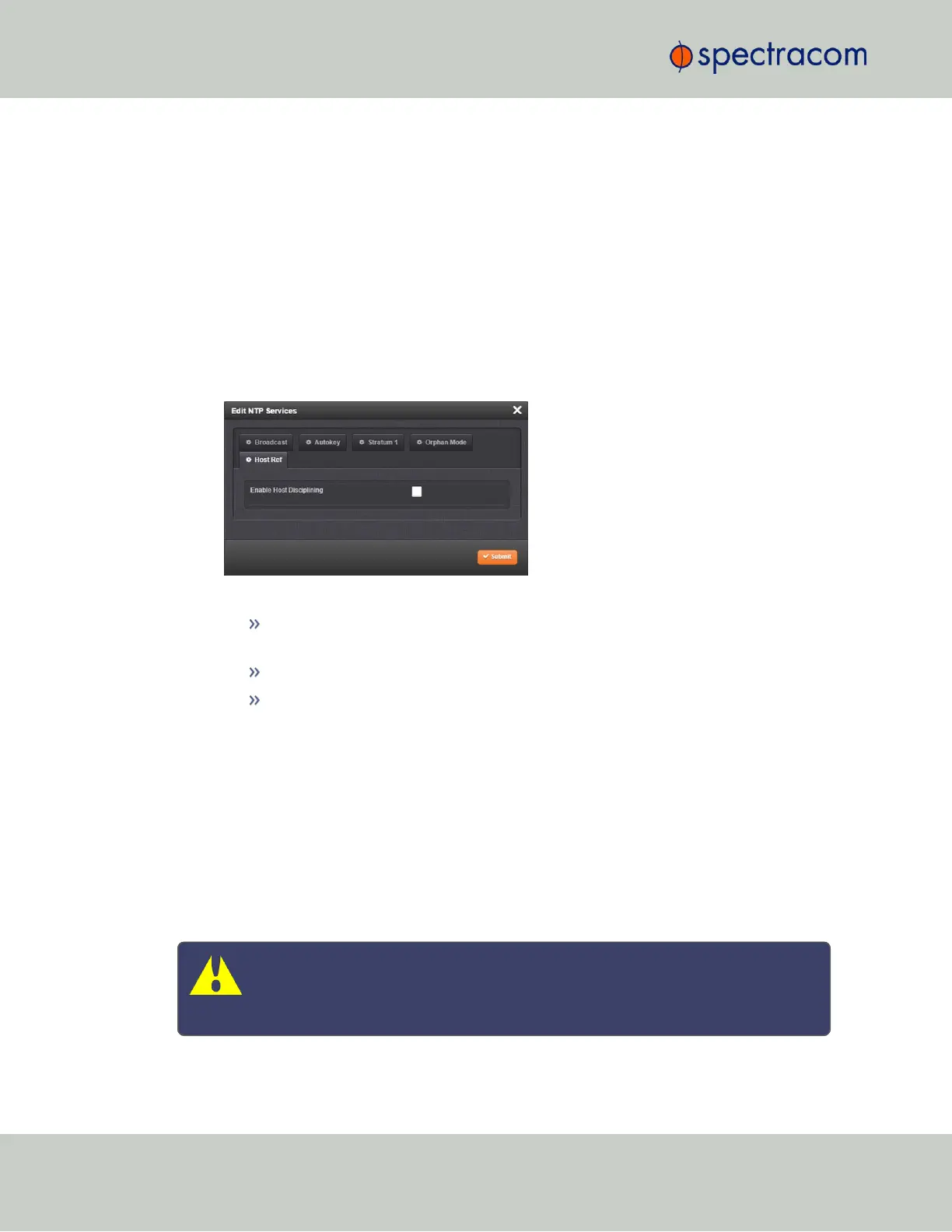While disabled Host Disciplining does not offer the benefit of a disciplined oscillator
when transitioning into or out of holdover, SecureSync on the other hand will not be sus-
ceptible to disciplining errors caused by network traffic or NTP-related issues.
2.14.14.1 Enabling Host Disciplining
In order for Host Disciplining to work, you must have enabled NTP, and you must have con-
figured an NTP Peer or Server, i.e. SecureSync is running as an NTP Stratum2 server.
To enable Host Disciplining:
1.
Navigate to MANAGEMENT > NETWORK: NTP Setup.
2.
In the NTP Services panel, click the GEAR icon. The Edit NTP Services window will display:
3.
Under the Stratum1 tab:
enable Stratum 1 Operation (this allows System holdover if GPS and the NTP serv-
ers happen to become unavailable for a period of time)
disable Prefer Stratum1
disable Stratum1 1PPS, and click Submit.
(The NTP Status Summary panel in the NTP Setup screen should now display Stratum 2.
For additional information, see "Configuring "NTP Stratum Synchronization"" on
page103.)
4.
Under the Host Ref tab, enable Host Disciplining, and click Submit. You do NOT have to
stop and re-start the NTP Service; SecureSync will do this for you.
2.14.15 NTP Expert Mode
Advanced NTP configuration is possible via the NTP Expert Mode, which allows you to write dir-
ectly into the NTP.conf file (the syntax is similar to the one used with CISCO routers).
Caution: NTP Expert Mode should only be utilized by advanced users, as incor-
rectly altering the NTP.conf file can cause NTP to stop working (if NTP is con-
figured as an input reference, SecureSync could lose synchronization).
132
CHAPTER 2 • SecureSync User Reference Guide Rev. 26
2.14 Configuring NTP

